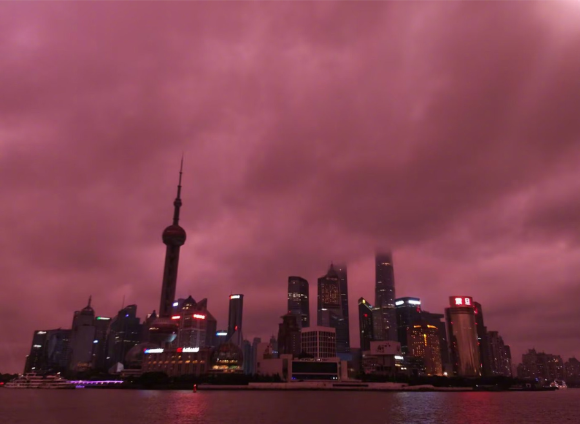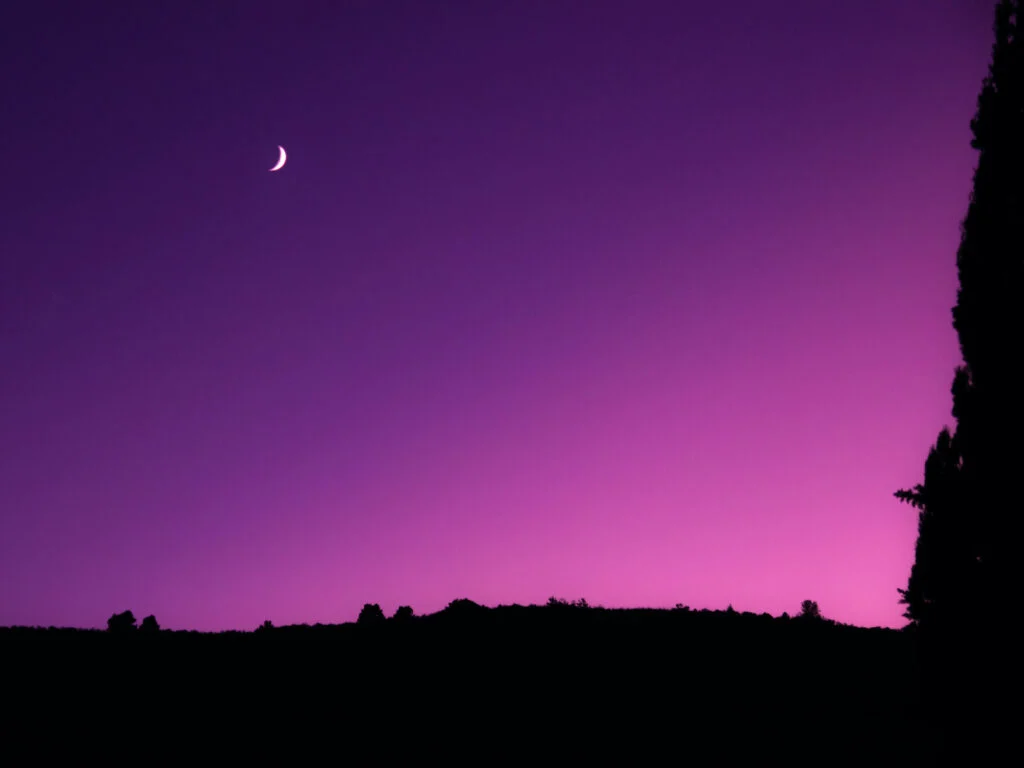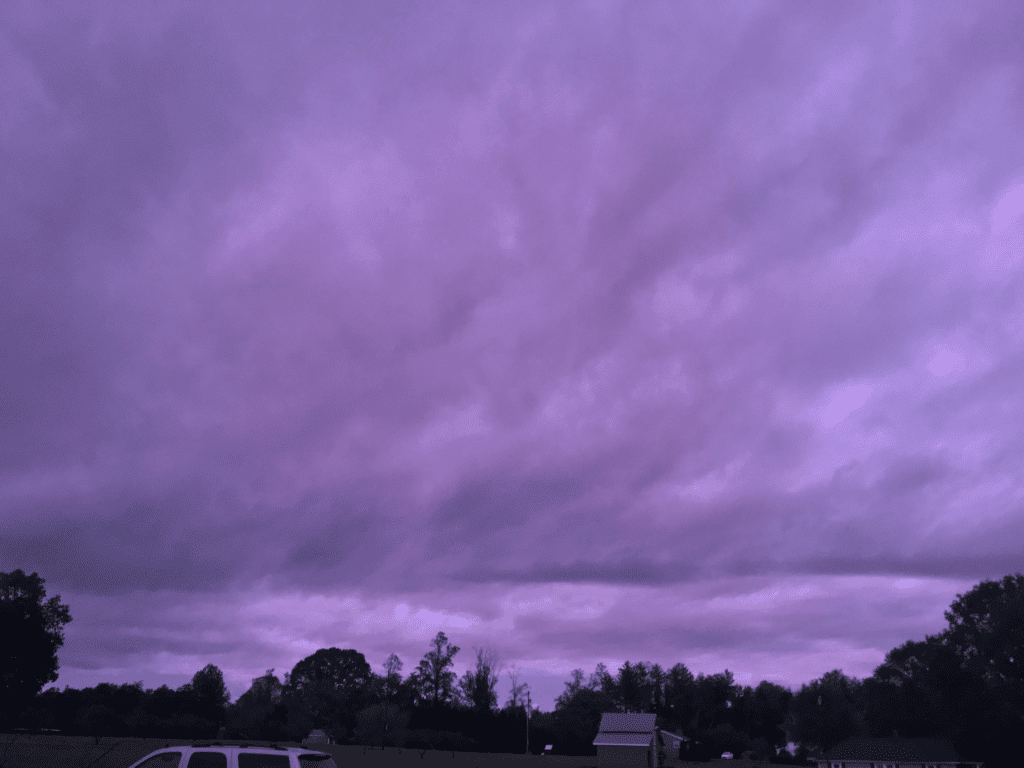Have you ever glanced up to see the sky suddenly turning a vivid shade of purple? While it might look like something straight out of a fantasy film, it’s actually a natural phenomenon linked to weather patterns. If you’ve noticed the sky shifting to this striking color, you might be witnessing a rare but important signal from nature—one that often precedes severe weather conditions. But what exactly causes the sky to turn purple, and why should you be cautious when you see it? Let’s break it down.
What Causes the Sky to Turn Purple?

The sky’s sudden shift to purple is an optical phenomenon influenced by a combination of meteorological and atmospheric factors. This mesmerizing change in color occurs mainly due to the scattering of sunlight as it passes through the atmosphere. The scattering effect happens when sunlight interacts with tiny particles in the air, such as dust, water vapor, or pollutants, altering the way light is refracted and reflected.
The Science Behind Light Scattering
Sunlight, which appears white to the human eye, is actually a combination of various colors that correspond to different wavelengths. Here’s how it works:
- Shorter wavelengths (like purple and blue) scatter more easily in the atmosphere because they interact with air molecules more frequently.
- Longer wavelengths (such as red and orange) are less scattered and can penetrate denser layers of clouds.
When there is an increased amount of water vapor in the atmosphere—typically before a storm—shorter wavelengths scatter even more, leading to the sky’s purple hue. The presence of dust particles and pollution can further intensify this scattering effect, making the colors appear even more vibrant.
Purple Skies and Storm Warnings: A Natural Alarm System
While the sight of a purple sky can be mesmerizing, it’s often a precursor to severe weather conditions. This color shift in the sky is usually a result of increased moisture and impending atmospheric turbulence. The combination of high humidity, heavy clouds, and potential air pollution all contribute to the dramatic shift in sky color.
How the Purple Sky Indicates Impending Storms
As a storm approaches, the air becomes saturated with moisture. This increased humidity acts as a natural prism, bending and scattering sunlight more dramatically than usual. Since red and orange wavelengths are longer, they pass through the thick cloud layers more easily, blending with the scattered purple and blue hues. This mix creates the rich purple or even purplish-red color often seen right before storms hit.
The Role of Air Pollution in Enhancing Purple Skies
While increased moisture is a primary factor, air pollution can also contribute to the intensity of a purple sky. In areas with high pollution levels, the abundance of particulate matter can scatter light more effectively, enhancing the colors visible in the sky.
Pollution’s Amplifying Effect on Color
Pollutants such as dust, soot, and chemicals in the atmosphere act like additional prisms, scattering more light and further boosting the color intensity. When combined with high humidity, this creates a more dramatic visual effect. The presence of air pollution not only makes the sky appear more colorful but can also indicate potential air quality issues, adding another layer of concern when the sky turns purple.
Why You Should Be Cautious When the Sky Turns Purple

While a purple sky may look beautiful, it is often a warning sign of impending natural disasters such as storms, hurricanes, or even tornadoes. This color change is particularly common before tropical storms and heavy thunderstorms, which can bring intense rainfall, strong winds, lightning, and other dangerous weather conditions.
Purple Skies as a Precursor to Severe Weather
The phenomenon serves as a natural alarm, urging people to prepare for the possibility of severe weather. Here’s why you should be on high alert when you see a purple sky:
- Increased Risk of Lightning: Purple skies often signal thunderstorms, which come with the danger of lightning strikes. If you’re outdoors when you notice the sky turning purple, it’s best to seek shelter immediately.
- Potential Flooding: Storms that are preceded by purple skies can bring heavy rainfall, leading to flash floods. If you’re in a low-lying area, take precautions and be prepared to move to higher ground if necessary.
- High Winds: Strong winds often accompany the type of atmospheric conditions that produce purple skies. These winds can cause property damage, knock down trees, and make driving dangerous.
What to Do When You See the Sky Turning Purple
If you notice the sky changing to purple, take it as a cue to stay informed and prepared. Here’s what you can do to stay safe:

1. Check Weather Alerts Immediately
As soon as you observe a purple sky, check your local weather updates. Meteorological warnings can provide real-time information about any potential storms or extreme weather conditions that are moving in your direction. Sign up for emergency alerts on your phone to ensure you don’t miss critical updates.
2. Prepare for Heavy Rain or Flooding
Purple skies often precede heavy rainfall, so it’s wise to prepare for potential flooding. Move valuable items to higher ground, ensure your gutters and drains are clear, and avoid driving through flooded areas. If you’re in an area prone to floods, consider preparing sandbags or other barriers to protect your property.
3. Stay Indoors and Avoid Outdoor Activities
If you’re outdoors when you see the sky turning purple, seek shelter immediately. Avoid open fields, tall structures, and bodies of water, as these can attract lightning during a storm. Stay indoors until the storm has passed, and keep away from windows and glass doors.
4. Be Cautious of Tornado Warnings
In some cases, purple skies can signal the onset of tornadoes, especially in regions prone to such weather events. Familiarize yourself with tornado safety protocols, and identify a safe space in your home, such as a basement or interior room, where you can take shelter if a tornado warning is issued.
The Beauty and Danger of Purple Skies: A Final Word
The sight of a purple sky is undoubtedly beautiful, but it’s also a reminder of nature’s power. While it’s a rare optical treat, it’s best viewed from the safety of indoors, as it’s often a precursor to severe weather. By understanding what causes the sky to turn purple and recognizing it as a potential warning sign, you can better protect yourself and your loved ones when faced with extreme weather conditions.
In short, a purple sky may be Mother Nature’s way of reminding us of her unpredictable and powerful forces. So the next time you look up and see the sky painted in shades of purple, don’t just admire its beauty—take it as a cue to stay prepared and alert.


